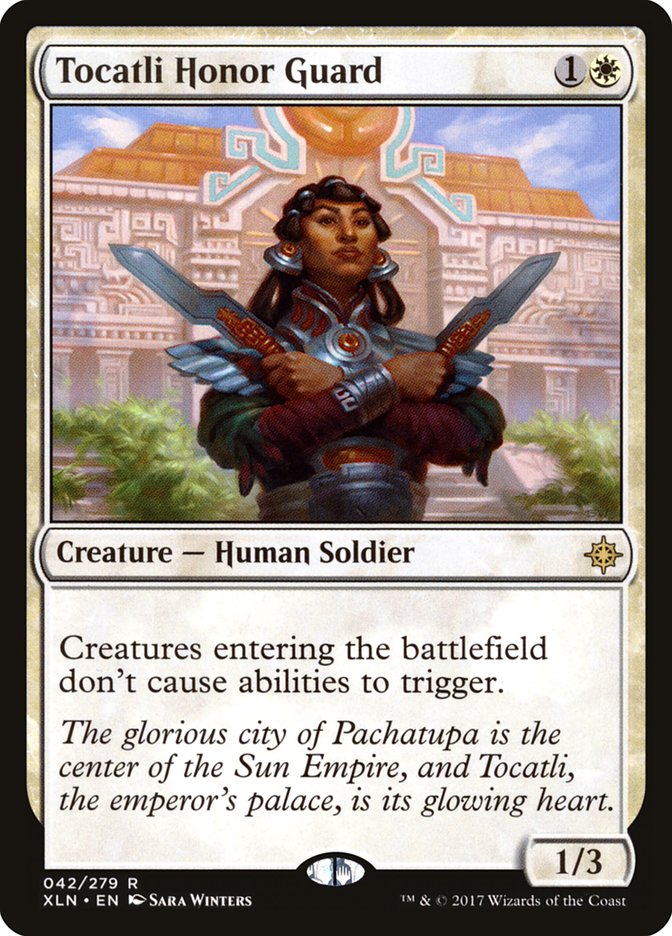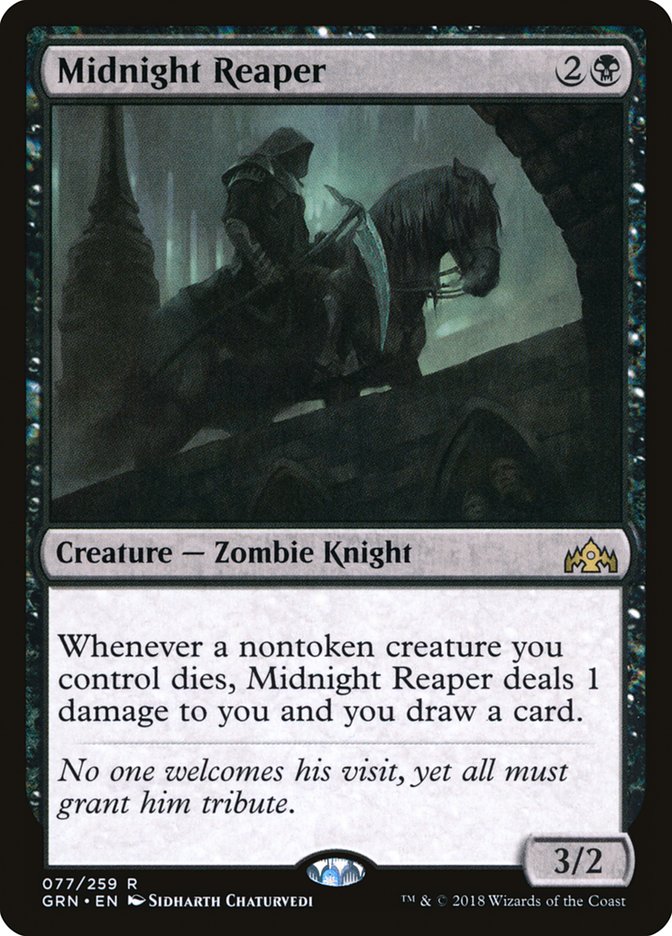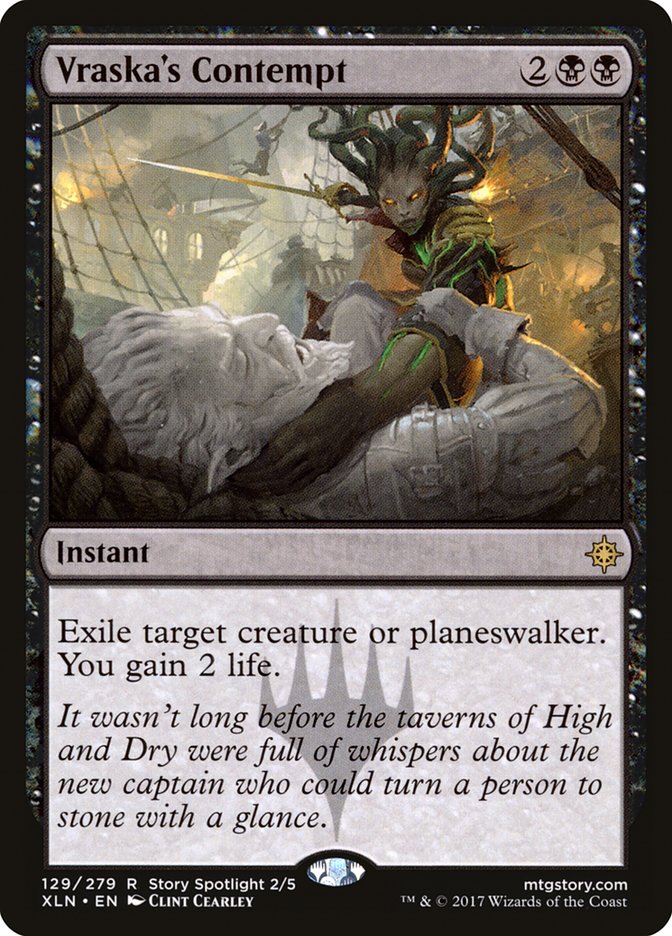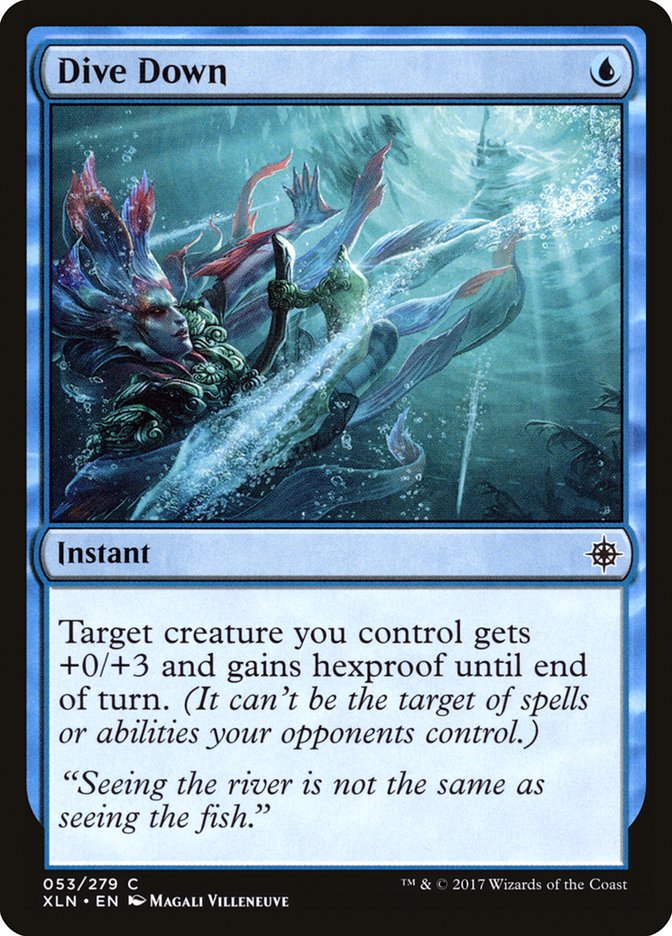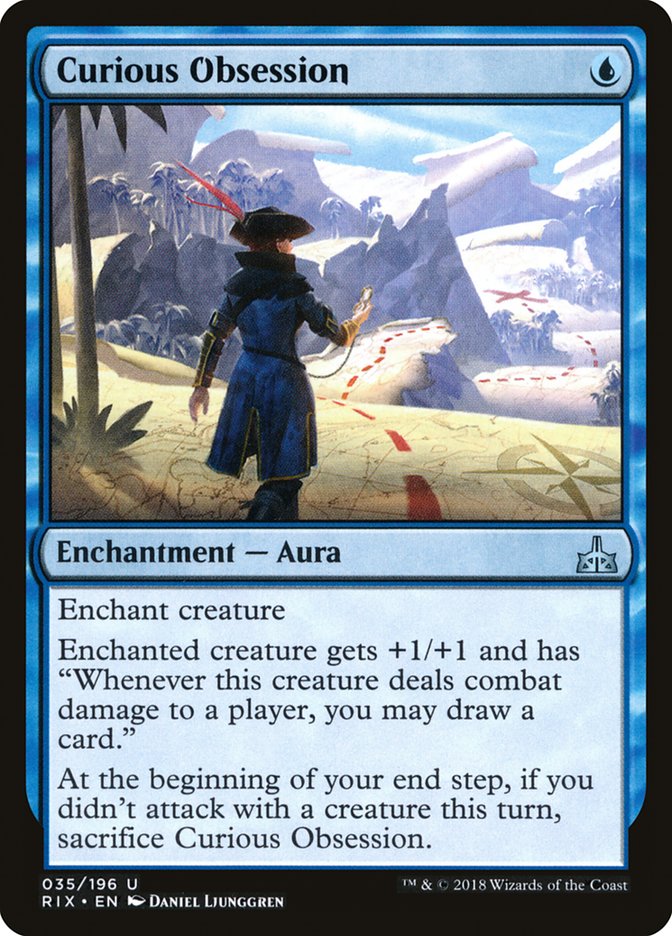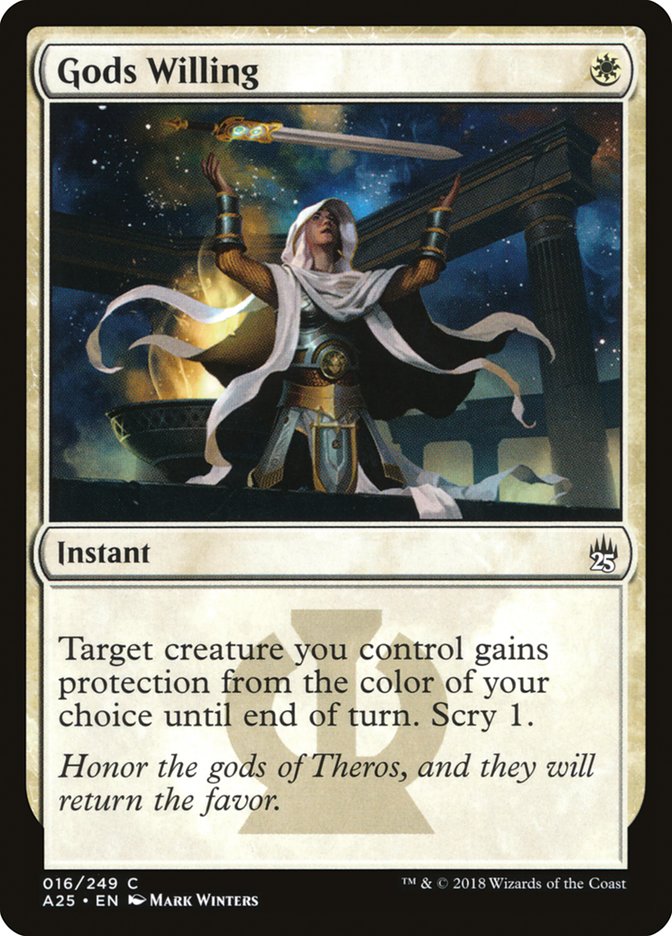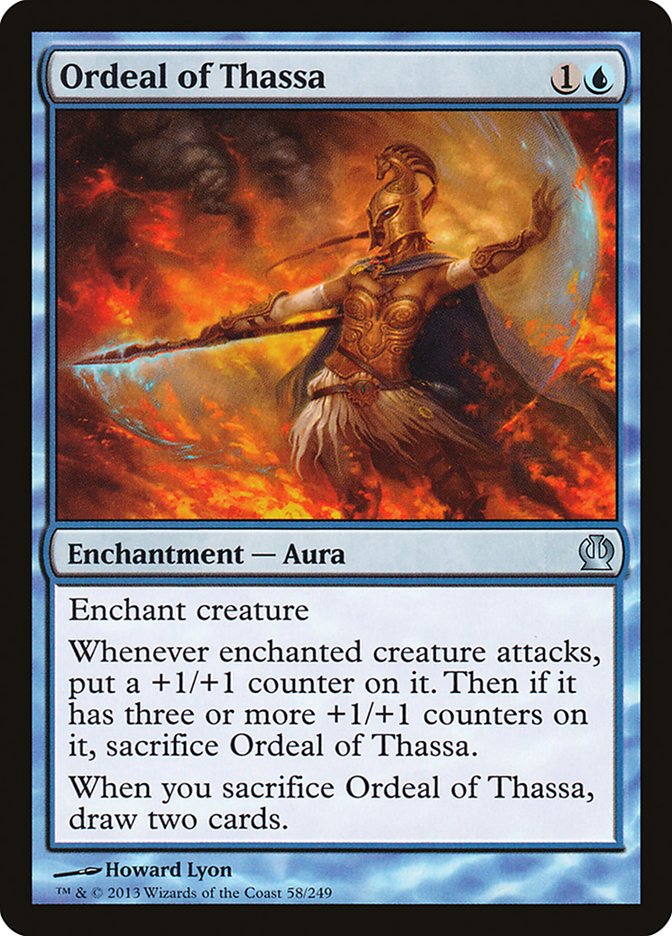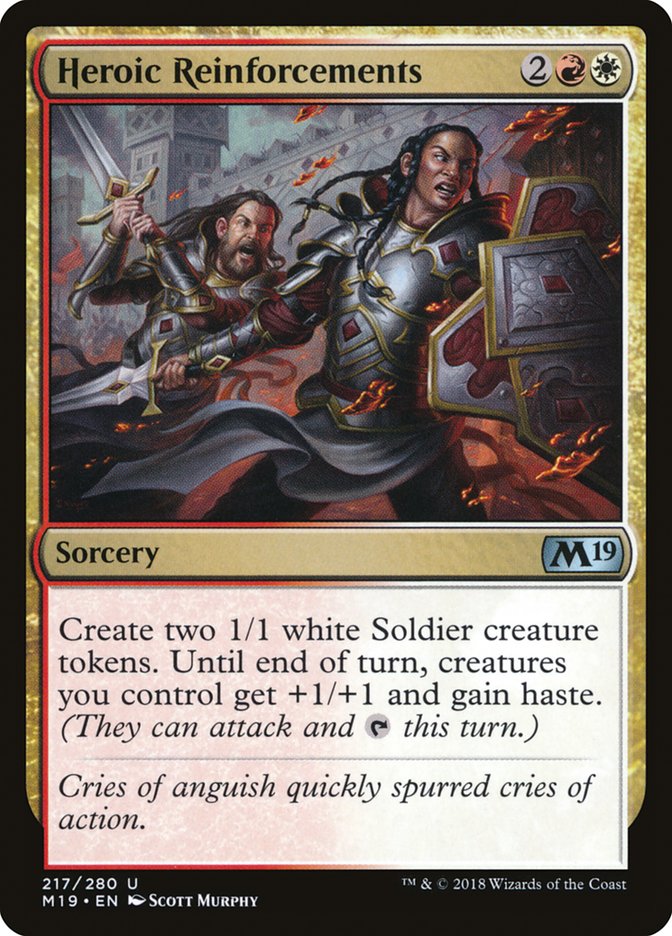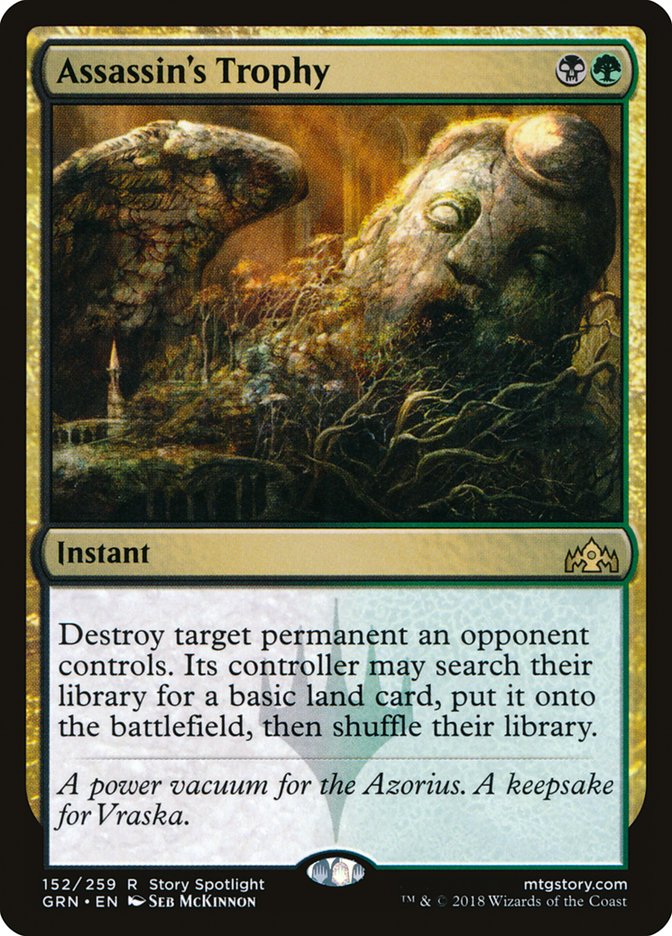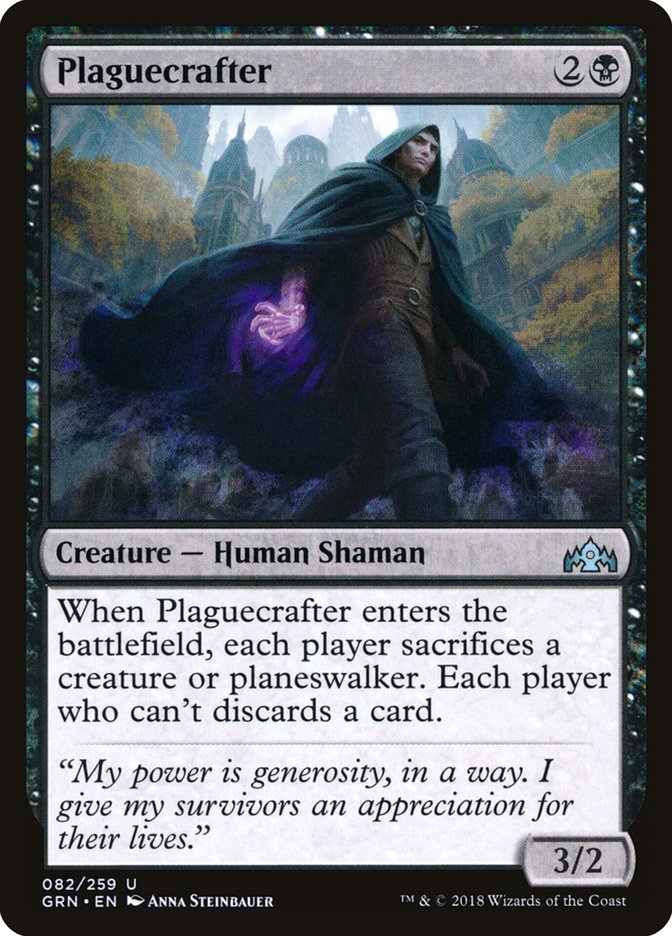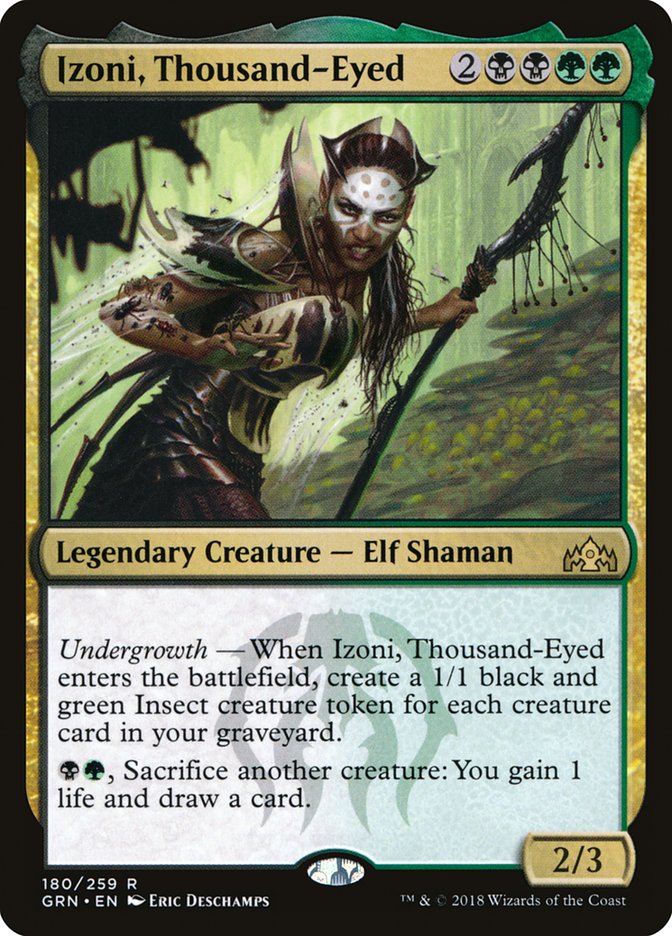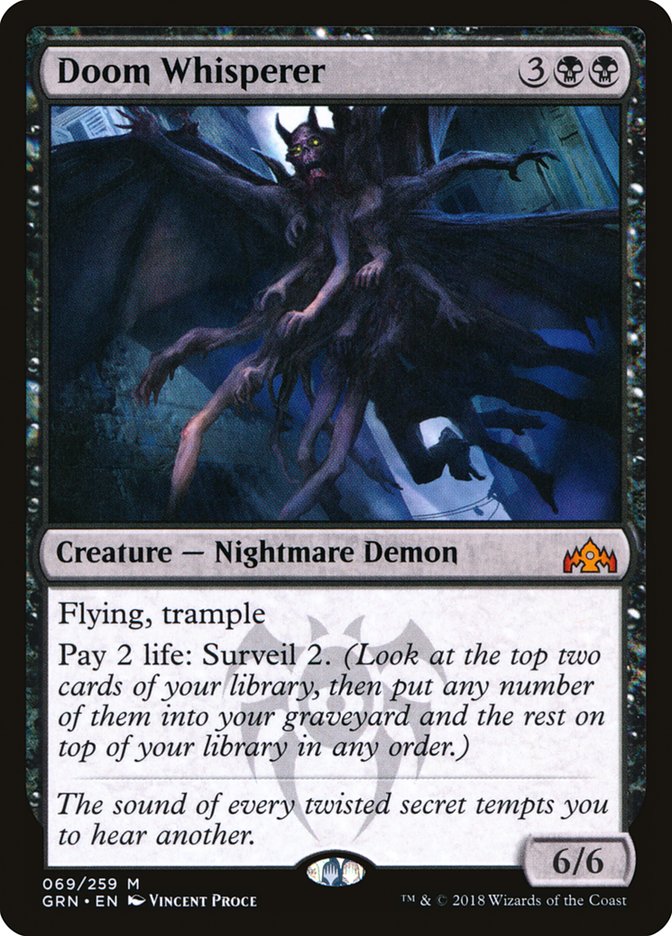We’ve all had a few weeks to digest this new Standard format, though it still continues to surprise me. Just this past weekend, the Magic
Online Championship Series Qualifier featured a slew of aggressive white
strategies that
dominated the 6-2 or better decklists
. This is not surprising if you’re intimately aware of Jeskai Control’s win
percentage against hyper-aggressive strategies. After Eli Kassis’s win at
Grand Prix New Jersey, I knew control would have a target on its head, but
I would never have expected this kind of backlash.
While Adanto Vanguard decks aren’t exactly new at this point,
low-to-the-ground versions featuring a ton of one-mana creatures hasn’t
exactly been popular over the last month and change. Since the format’s
debut Golgari has been the talk of the town, and any deck that can punish
Golgari was thought to be a good choice for the weekend. But what happens
when all the Golgari decks try to beat themselves? They cannibalize each
other and that takes away the tools that helped them beat everything else
in the first place.
Moving away from Planeswalkers means you’re soft to control. Going bigger
and leaving Wildgrowth Walker behind means you’re going to get slammed by
any opponent willing to play a ton of cheap creatures. Building your deck
without taking Tocatli Honor Guard into account means you’re going to lose
to it straight up.
It came as no surprise to me that Golgari did poorly on the double Grand
Prix weekend. I knew that Jeskai Control, and people coming overly prepared
for the archetype, would give it trouble. And if the Golgari players
weren’t completely on their toes about how to attack each matchup and
flubbed the deckbuilding portion even a little, they would fail to find
success. Missed out on the Midnight Reaper train? Well, you’re going to
lose to Deafening Clarion over and over. Cut all your Vraska’s Contempt?
Rekindling Phoenix is going to eat you alive!
Once people realized that Golgari didn’t exactly have inevitability, other
decks preyed on them by going way over the top. Expansion could bury them
in card advantage. Sweepers were actually quite good, as they solved the
Carnage Tyrant problem. And once the control decks all started eating the
Golgari decks, it left a small space for aggressive decks to come back. And
they came back with a vengeance.
Working for the Weekend
So, what should we expect from the game’s strongest players this weekend?
Well, for starters, I expect virtually every competitor to be aware of how
the aggressive decks performed last weekend. And once you actually
understand the information and figure out why the aggressive decks
performed well, you should be able to hammer out an expected metagame for
the Pro Tour.
Here are your options:
-
Ignore the results. If your deck is okay or good against control
strategies, this is certainly a fine choice. However, if there’s a
certain card or shift in a particular archetype that’s troublesome
for your deck, it could ultimately mean losing percentage points in
that matchup if the trend picks up in popularity (think four
maindeck Experimental Frenzy in Mono-Red Aggro). -
The second level of thinking is playing a midrange strategy slanted
toward beating the aggressive decks. That means a return to
Wildgrowth Walker in Golgari. That means leaning toward Boros
Angels or some other midrange deck with tweaks to make your deck a
bit better against these all-in strategies. Maindeck Deafening
Clarion plus a big threat like Lyra Dawnbringer is pretty solid
against virtually any aggressive deck. The reason why this isn’t
enough for Jeskai Control is because the rest of their deck is so
reactive and has a fairly high average casting cost, so the
aggressive decks just go under them. When they’ve cast three spells
on the first three turns, there’s a solid chance you’ve cast
nothing. And at that point, if you don’t have Deafening Clarion,
you lose. And sometimes you lose even with a Deafening Clarion
because their creatures are resilient to removal (Dauntless
Bodyguard, Hunted Witness) -
The next level of thinking is that if your deck isn’t good against
aggro, you can hope that no one decides to switch to aggro because
the metagame should shift towards being hostile towards it. In this
scenario, something like Jeskai Control would be a great choice
because it traditionally whoops everything that preys on aggressive
decks. This is certainly the level I’m most happy with, because it
means I get to play Jeskai Control. But in this scenario, with the
aggro decks being fairly new in how they’re being built (Heroic
Reinforcements), it’s possible that the spells we traditionally
think beat aggro just aren’t good enough. -
And lastly, you can just play an aggressive deck and hope people
aren’t prepared for it. In my humble opinion, this option seems
like the most dangerous. Players are naturally hostile toward
aggressive strategies in high-profile events, so having an
important event one week before the Pro Tour feature a slew of
aggressive decks means people are going to be prepared. One way or
another, playing any sort of aggressive deck at the Pro Tour is
risky. Aggressive decks are known for presenting a window to the
opponent. If they can stop your pressure before the window closes,
the aggressive decks rarely have the tools to go super long after
that. The more expensive spells of the opponent (Teferi, Hero of
Dominaria or Vraska, Relic Seeker) will ultimately cripple every
draw the opponent can play after that. The trick for the control or
midrange players is making sure you get to a point in the game
where these types of finishers can be effective.
Heroic in Standard
With all that in mind, there are three decks that attack three very
different metagames. And unless you have your finger on the pulse of
Standard, picking the perfect one is going to be extremely difficult. And
even if you do pick the “right one,” there’s a chance you just get paired
against all the wrong matchups and lose! Just ask all the other people who
played Brad Nelson’s Boros Angels deck at Grand Prix New Jersey!
First off, I fully expect Mono-Blue Aggro to be a major player at the Pro
Tour if aggressive strategies end up being on the down-slope. I think
Gabriel Nassif caught a lot of people offguard at Grand Prix Lille, and his
second-place finish was stifled by his only bad matchup in the Top 8:
Mono-Red Aggro. The more decks running around that are soft to Spell
Pierce, the better. If the metagame leans toward Arclight Phoenix, Jeskai,
and Golgari, Mono-Blue Aggro should absolutely dominate.
With that said, if you played Mono-Blue Aggro in last weekend’s Magic
Online Championship Series Qualifier, there is a solid chance you went 4-4
or worse. It’s a pure metagame call, as the deck preys on virtually
everyone coming to play longer games with high-impact and expensive spells.
If I were going to play Mono-Blue Aggroo this weekend, here’s the list I
would use.
Dive Down is so unbelievably good in some matchups that I honestly can’t
fathom ever winning if my opponent draws this card. At first, I thought of
Dive Down as a bad counterspell. It doesn’t protect against Settle the
Wreckage. It doesn’t stop Cleansing Nova. And you must keep one mana up
every single turn!
The truth is that Dive Down is a blue Gods Willing, and you all should know
how much respect I have for Gods Willing. In the right deck, Dive Down
functions as a one-mana counterspell to anything remotely important. It can
save your creature suited up with Curious Obsession. It can keep your
Merfolk Trickster alive through Deafening Clarion. And on top of all that,
it usually saves your Tempest Djinn in combat against an opposing Crackling
Drake. While Dive Down isn’t nearly as important to your deck as Curious
Obsession in the grand scheme of things, I’ll say that this deck couldn’t
function without both cards. And honestly, Dive Down and Curious Obsession
are my two favorite one-drop spells in Standard.
Curious Obsession is the glue that holds your deck together. When combined
with a cheap creature (preferably with evasion), you end up drawing two
cards per turn. That forces your opponent to cast removal at times where
they get blown out by Spell Pierce. Those extra cards ensure you keep
applying pressure either through more creatures or just countering
everything your opponent plays.
Curious Obsession is a messed up Magic card, and this Mono-Blue Aggro deck
plays out drastically different in games where you have access to it versus
games where you don’t. I keep telling myself that, “If only my opponent
wouldn’t cast Curious Obsession, this game would be easy.” And yet I keep
losing to it. With Chart a Course and Opt, they have plenty of ways to dig
for it. And when they don’t draw it, they can still occasionally play a
Delver-esque gameplan where they pump out two or three cheap threats and
try to ride those to victory.
Does that sound like something familiar? Small creatures combined with
protection spells and an enchantment that draws a bunch of cards? To me
that sounds a lot like W/U Heroic! Where do I sign up?
Reinforcements? Or…Refreshments?
A few weeks ago, if you had told me that Heroic Reinforcements was the best
card in Standard, I would have laughed you out of the room. What about
Carnage Tyrant? Teferi, Hero of Dominaria? Heck, what about
Expansion//Explosion? All those cards are much better than Heroic
Intervention!
But are they?
The raw damage output is unbelievable at times. The ability to
recoup from a sweeper effect is mind-boggling. And if you build your deck
right, you can use Heroic Reinforcements to kill opponents out of nowhere.
Last weekend’s results in the MOCS Qualifier should be relatively
surprising…if you haven’t played a lot of Magic Online in the last month
or so. I have been continually beaten down by Adanto Vanguard decks,
including a few splashing red for Heroic Reinforcements. But here’s my
problem: Your creatures need to be sticky or else you run the risk of
Heroic Reinforcements doing very little.
Cards like Heroic Reinforcements don’t want you to ever trade in combat.
You’re actively rewarded for playing creatures with “two lives” like Hunted
Witness. You want threats that are difficult to interact with like Adanto
Vanguard and Knight of Grace. You want more creatures that protect other
creatures from removal like Dauntless Bodyguard. And you want spells that
generate multiple threats like History of Benalia. When you combine all
that into one tight shell, you have the makings of a busted Heroic
Reinforcements strategy.
In a lot of ways, Heroic Reinforcements reminds me a lot of Reckless
Bushwhacker. If you cast Heroic Reinforcements on the same turn you’re
casting another creature, the damage output becomes absurd. But if you
already have a few creatures on the battlefield, including access to a
History of Benalia chapter II you don’t actually need that extra creature.
You just get to put four power on the battlefield and boost your entire
squad, and you don’t even need to turn on Surge!
If I were to play Heroic Reinforcements, this is the list I would play.
Creatures (24)
- 4 Tocatli Honor Guard
- 4 Adanto Vanguard
- 4 Skymarcher Aspirant
- 4 Benalish Marshal
- 4 Dauntless Bodyguard
- 4 Hunted Witness
Lands (8)
Spells (28)

I think this version of Heroic Reinforcements puts a lot of pressure on
your opponent to answer the right type of spell at the right times. If they
sweep you with Deafening Clarion, you can rebuild easily or mitigate a lot
of the damage with cards like Dauntless Bodyguard or Hunted Witness. And if
they try to sandbag the Deafening Clarion until you trigger Chapter Two of
History of Benalia, there’s a chance they just straight up die to Heroic
Reinforcements.
If people don’t adjust their decks to interact favorably with aggro decks
in the right way, I could very easily see a deck like this one end up
taking dominating the tournament. It absolutely hammers control decks and
will run over just about everyone who isn’t sweeping or building toward an
unbeatable battlefield presence. There are some particularly annoying
creatures that could gum up the works, but I think this is your best bet
for beating anyone coming in unprepared. And if they are coming in
prepared, there’s very little you can do that will change the matchup.
Golgari, I Guess?
I’ve heard a lot of rumbling over the last few weeks that people just
aren’t winning with Golgari anymore. Brad Nelson just couldn’t buy a match
win on VS Live! with any version of the archetype, and countless people “in
the know” have said their win rate has declined significantly in the last
few weeks. With that said, I think a deck like Golgari is actually poised
to make a significant comeback.
As a Golgari pilot, you need to be prepared to handle the three major
archetypes: Aggro, Midrange, and Control. Cards that are good against one
archetype are usually pretty bad against another, so you find yourself
playing suboptimal cards in order to bridge the gap between two different
archetypes to find the best middle ground. A card that is good against both
aggro and midrange is better than a card that is only good against one and
not the other.
With that said, the first three or four weeks had Golgari decks beating
virtually everyone in all the major Standard tournaments, which ultimately
ended with Golgari decks eating each other alive. It was a race to see
which Golgari deck could metagame against the other Golgari decks the
hardest, and it became much more about breaking the mirror than making sure
everyone else didn’t catch on to how to beat Golgari. And once you start
making a ton of concessions to beat the mirror, your aggro and control
matchups start to get a lot worse.
So, I think a regression is in order. Don’t you? Let’s go back to the
drawing board and figure out how to build our Golgari deck to give us a
good chance to beat everything as opposed to focusing solely on dominating
the mirror!
Creatures (25)
- 4 Llanowar Elves
- 3 Wildgrowth Walker
- 4 Merfolk Branchwalker
- 2 Seekers' Squire
- 1 Thrashing Brontodon
- 4 Jadelight Ranger
- 3 Ravenous Chupacabra
- 2 Midnight Reaper
- 2 Golgari Findbroker
Planeswalkers (6)
Lands (15)
Spells (14)

A few notable exceptions:
I hate Assassin’s Trophy. I’ve never liked it. I think most people only
played it to help kill planeswalkers in the mirror. It also had some legs
against Jeskai Control in helping contain Teferi, Hero of Dominaria, but I
don’t think that’s how you’re winning most of those games. In all honesty,
as a Jeskai Control player, I was usually pretty happy with getting my
Teferi hit by an Assassin’s Trophy, which made me think the card was even
worse than I ever imagined.
Cast Down is a great answer to Tocatli Honor Guard, as well as virtually
every other creature in the format that costs less than four mana. Cast
Down also doesn’t give your opponent a free land, so there’s that.
I love me some Plaguecrafter, but I just don’t think this is the format (or
deck) for it to shine. I think Plaguecrafter is busted in a Gruesome
Menagerie deck and should get much better when opponents are less inclined
to cast Legion’s Landing or History of Benalia. The fact that it’s a
Fleshbag Marauder with mostly upside is a big deal, but I just don’t think
now is the right time for it.
I’ve seen quite a few lists playing these two cards, but I just don’t think
either are where you want to be in the archetype. They basically fill the
role that the planeswalkers are currently filling, though they’re slightly
easier to handle. Deafening Clarion is already very good against you and I
don’t want to play more cards that get swept up in it. Doom Whisperer is
solid but doesn’t really give your deck a significantly different angle of
attack. While Doom Whisperer is still one of the better cards from Guilds of Ravnica, I just don’t think Golgari is the right home.
Now, if you’re casting Disinformation Campaign, I have the perfect
candidate for you!
I expect the Pro Tour to be filled to the brim with different archetypes,
which is a huge signifier of a great format. And that’s honestly pretty
refreshing. We’ve all had a month or so to “break” Standard, and yet we all
keep coming back to the drawing board. Each week the best deck changes and
we find some other way to exploit the strategies that are doing well. Even
just writing this article helped me bring to life some solid ideas for
attacking the metagame that I expect to show up!
Regardless, with how quickly things change, or how one specific matchup can
be turned on its head by a single card change, makes me believe that this
is the best Standard format we’ve had in years. One deck performing well at
last weekend’s event changes the viability of an entire archetype! It might
take me a day or two to get over it, but I don’t think Jeskai Control will
have a realistic shot at winning the tournament if the metagame is anything
like it was in the MOCS Qualifier. Unless you completely change how the
deck functions, as well as weakening the matchups against midrange
strategies, Jeskai is basically dead on arrival. And even then, you might
just make the wrong metagame call and end up getting destroyed by the
“other decks” in Standard.
It’s annoying and beautiful and maddening to watch Standard shift so
quickly from week to week, but it feels like the old times again. And while
I won’t be playing in the event itself, I will be watching from home and
learning from the game’s best and brightest.


